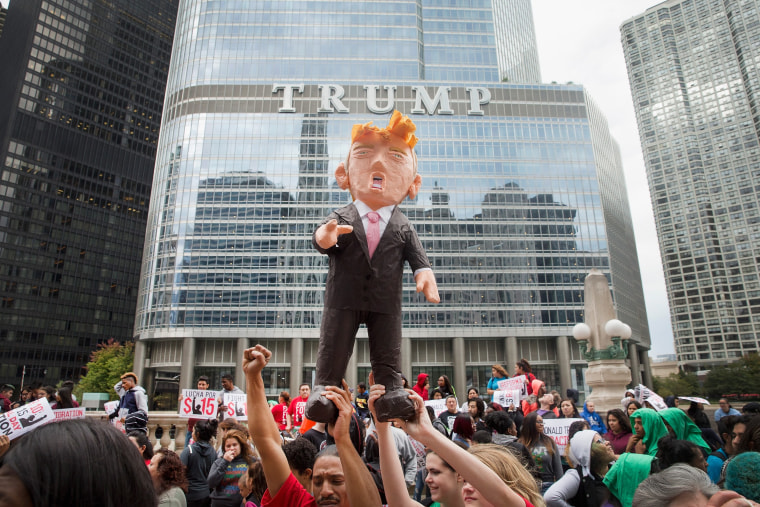AUSTIN, Texas -– Latino art is rooted in the communities from where it springs forth, where the artists historically have been the storytellers.
And Latino artists, sometimes working inside the mainstream, sometimes not, also have made powerful contributions in politics, a role that is taking new and effective forms with the advent of social media and technology, artists and scholars said Friday, the final day of a two-day conference at the University of Texas.
“There’s a long history of Latino political art and there’s been a resurgence beginning in the 1960s that continues today,” said Gilberto Cardenas, a sociology professor at the University of Notre Dame and the panel’s moderator. “Many artists were also activists and worked collectively with their communities to improve conditions of Latinos in the U.S.”
The artists were participants in a roundtable on the role of Latino artists in politics and activism. The occasion: the “Latinos, the Voting Rights Act and Political Engagement Conference,” where educators, civil rights activists, community activists and others explored Latino political engagement since the 1960s.
At the roundtable, panelists agreed that as long as Latino art remains organic, it will continue its history of influencing political dialogue and thought.
Artistic expression is central to the Latino community, said Tomás Ybarra-Frausto, a noted art scholar and historian from San Antonio.
“Art is the food we eat, the language we speak, the way we are, all the political questions,” Ybarra-Fraustro said. “That is what art is all about.”
Because Latino artists are close to the social problems of the communities where they live, said Ybarra-Fraustro, they are the first to understand the social concerns there and how to capture them in artistic form.
In that context of understanding and community, art can come to life in a flash of inspiration, said Amelia Malagamba, another San Antonio art historian. She noted that artisans reacted quickly after Donald Trump said Mexico was sending rapists and criminals to the United States.
“The Donald Trump piñata comes from the popular culture of our communities. It comes from our vernacular,” said Malagamba. “It didn’t wait. The next day, there was the piñata.”
As the panelists spoke, potent artistic images flashed on a screen above their heads. Some historical, others more recent, the works – posters, cartoon panels, social media memes -- addressed issues like deportation, immigration and politics.
In a conversation with NBC News before Friday’s panel, Ybarra-Fraustro said that with technology and social media, a poster can have more power.
Technology, he said, has enabled artists to create social media projects in a way that can be replicated instantly on the Internet, casting their messages far and wide.
That had been the case, Ybarra-Fraustro said, in Arizona when the state sought to defund Chicano studies. Artists mobilized quickly and with technology, their artistic messages spread beyond the Arizona state lines, to California, New York and beyond.
The power of a poster cannot be underestimated, Ybarra-Fraustro said, citing one stark example – images of barbed wire and the words, “CesanDeportación.” (End Deportation).
“Someone once said ‘A painting can win by points. A poster can win by knockout,’” Ybarra-Fraustro said.
Later, he told Friday’s fellow panelists that he was a member of the generation of the 1960s, and that Mexican American artists had been central figures in the advancement of the Chicano civil rights movement. But times have changed.
“All of us are aware (now) that this is the U.S. and that Latino art is American art and American art is Latino art,” Ybarra-Fraustro said. “We are now no longer the periphery. The American experience now has to include us as a foundational part of that experience, including visual art.”
